TRT 81:55 min.
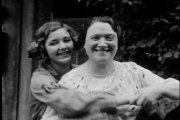
Abigail Child‘s films and videos always contain an element of humor, liveliness and complex montage. The Future Is Behind You premiered in New York Film Festival and the Rotterdam Festival, won first prize at Black Maria and the International Critic’s Prize atOberhausen (2005).

Born and raised in New Delhi, Nandini Sikand is an independent filmmaker and freelance televison producer based in New York City. Her films include The Bhangra Wrap (1995, distributed by NAATA), Don’t Fence Me In (1998, distributed by Women Make Movies) and Amazonia (2001, distributed by Women Make Movies) and In Whose Name? (2004) All her films have won awards and have screened at numerous domestic and international film festivals. Nandini has been awarded grants for her films from The Jerome Foundation (1997-98) and New York State Council on the Arts (2001-02). She also produced the documentary, Mahasweta Devi: Witness, Advocate, Writer (2001). She is on the board of directors of Women Make Movies (www.wmm.com), a non-profit feminist, media distribution organization. In television, she has worked on projects for Channel Four: UK, Rainbow Programming, Ovation: the Arts Network, HBO, Oxygen Media and The History Channel.
Nandini is an Indian Classical dancer and is co-founder and co-director of the Trinayan Collective (www.trinayan.org). She is also pursuing a PhD at in Cultural Anthropology at The Graduate Center, CUNY and has taught courses on production and film theory at Hunter College, CUNY and .Swarthmore College, PA.
.jpg)
Rä di Martino was born in Rome in 1975 and she lived in London since 1997 where she graduated with an MFA at the Slade School of Art. In 2004 she moved to New York with a research grant award at Columbia University.
Candy Coated Humvee - Drew Waters 2005 1:00
Oh Dude - Drew Waters 2005 1:00

Through the creation of a single iconic repetitive image Candy Coated Humvee displays the intersection between official political spin and the realities of a failing war on terror. Eternal flames in an eternal war.
Oh Dude breaks with the heroic or benevolent war narrative that commonly frames images from Iraq as they are presented to a mainstream Television audience. In displaying a segment of footage deemed too explicit or ambiguous for the daily news narrative, a clearer perception arises, a closer view of the realities of technological warfare.
Drew Waters is an Australian digital and video installation artist residing in Brooklyn, NY. As well as creating works of art he is a freelance video editor at NBC Studios in New York.
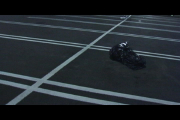
This story spawns from the contested ground within our conscience. Using metaphorRapturedescribes the sadistic and per-verse impulses in our capitalistic culture. Denial, compliance, erasure, and victimization are shown as characters in a condition ofa post 9-11 America.
Rapture is the first collaborative project between Mathieu Borysevicz and Jean-Christian Bourcart. Mathieu is a Brooklyn based artist, filmmaker, and critic who exhibited his work at the ICA London, the Bauhaus in Dessau, The Beijing Art Museum, etc. He has received awards from the Asian Cultural Council, Lower Manhattan Cultural Council, and Nebraska Council of the Arts. Jean-Christian Bourcart, a photographer and filmmaker, has been living and working in New York since 1997. As a photographer, Bourcart has been the recipient of the Prix Gilles Dusein, Paris, and The World Press Award, Amsterdam. His films have been awarded numerous prizes including the Prix du Jury, Belfort Festival, and the Prix d'Interpretation Masculine, Annecy Festival.
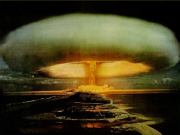
Jennifer Matotek is an emerging curator, interdisciplinary artist, and videomaker whose work has been shown across North America in galleries and film and video festivals such as the Chicago Underground Film Festival, the New York Underground Film Festival, and Cinematexas.
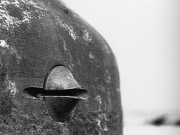
Sound by Andrew Creighton.
Robert Creighton received his BA in Industrial Design from the Rhode Island School of Design and worked as an exhibit designer for six years. His background includes widely varying exhibit, product, and media design projects. He is currently freelancing on various media projects and recently finished a Masters degree in Media Studies at The New School in New York. As part of a larger investigation into movement and the future of transportation, his thesis project explored the absence of motion in cars.
.jpg)
John Richey is a cross-disciplinary artist who creates intimate works about the paradoxical situations of fear and control. He received a BFA from The University of Arizona in 2001 and a MFA from the University of California, San Diego in 2004. His animations have been exhibited nationally and internationally and were mentioned in the “Best of 2004” issue of ARTFORUM International. Richey currently resides in Brooklyn, NY and is the Head Preparator at Greene Naftali Gallery.
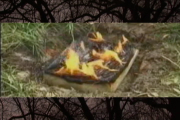
Jason Boughton lives and works in Brooklyn.